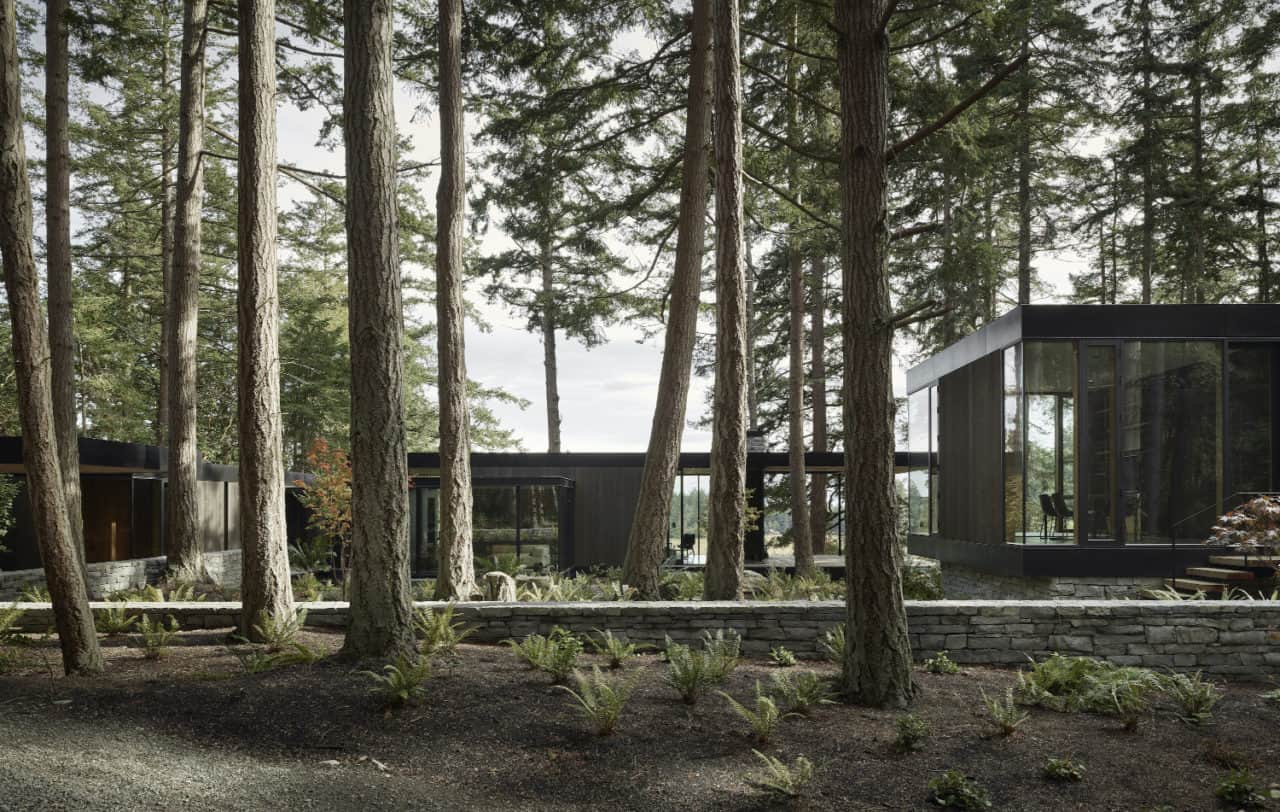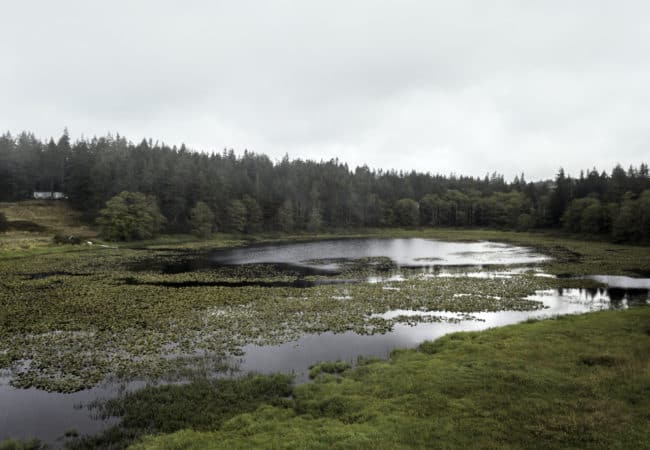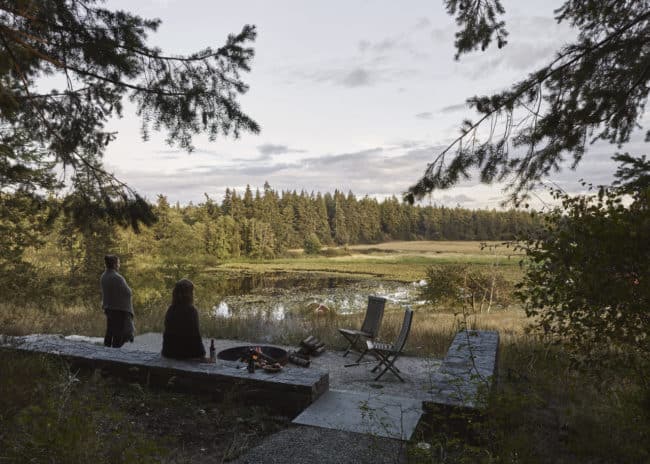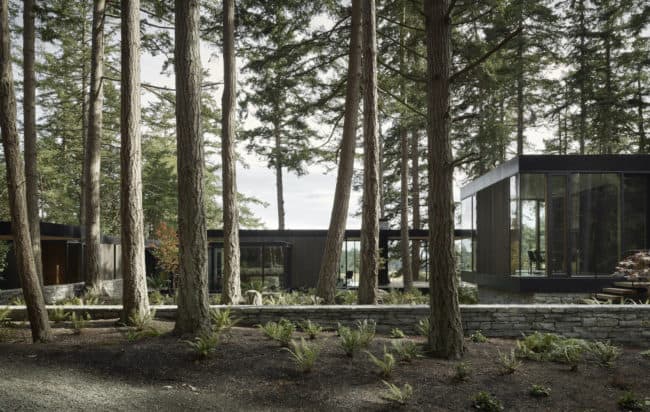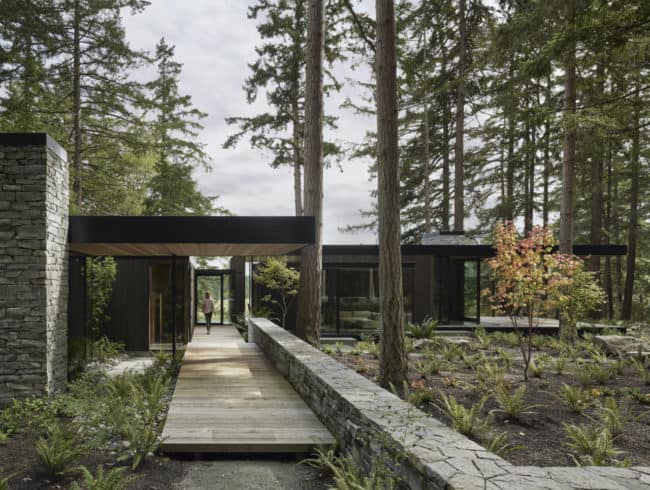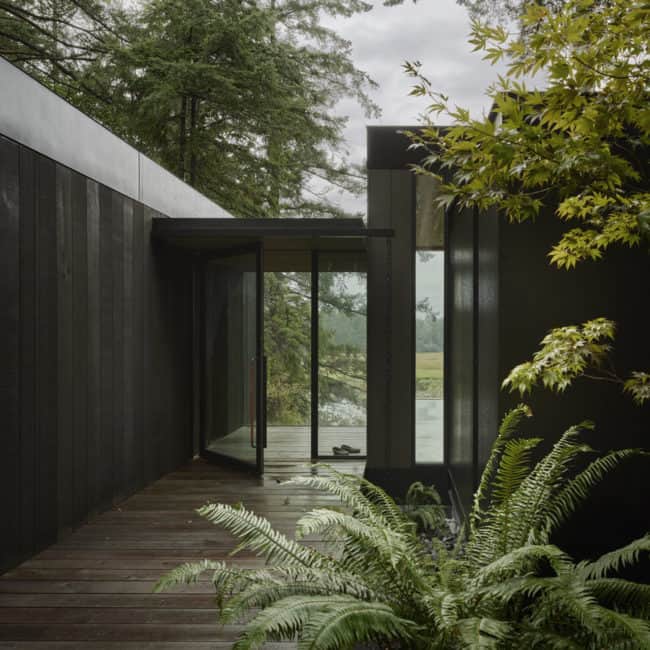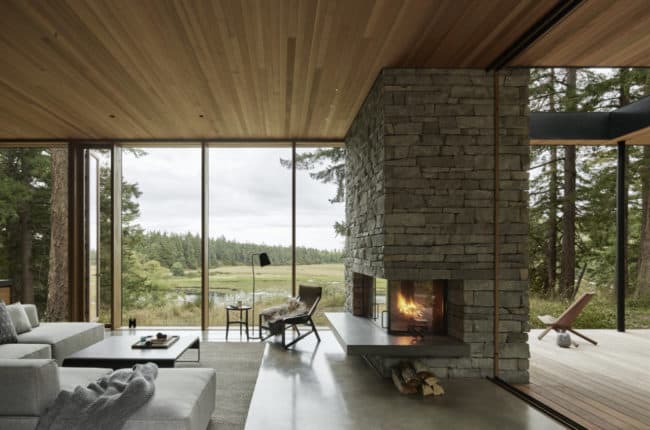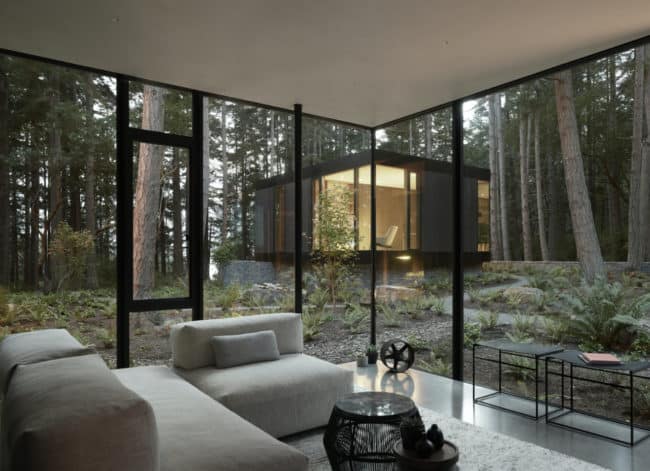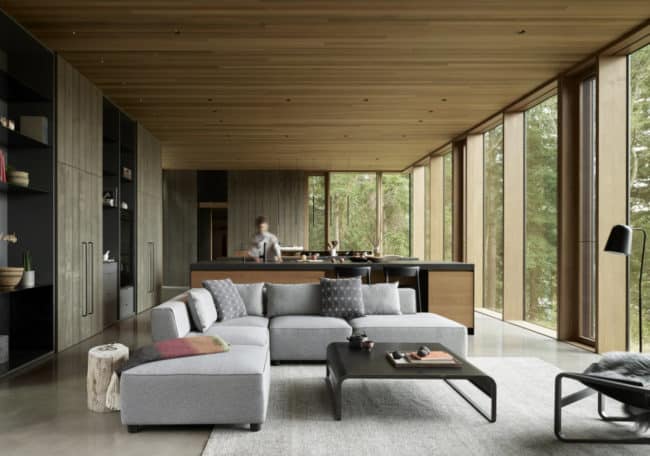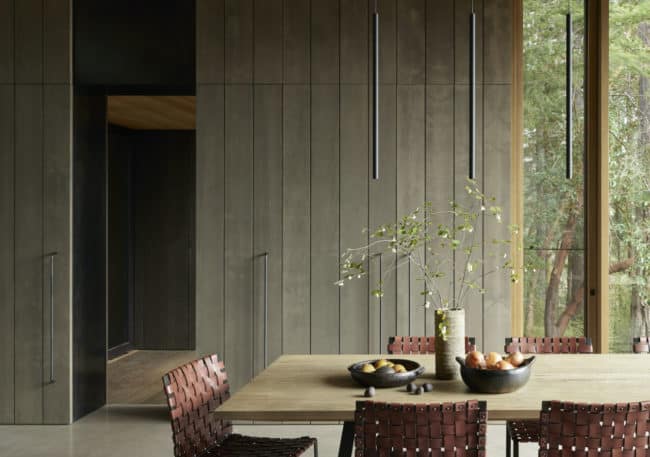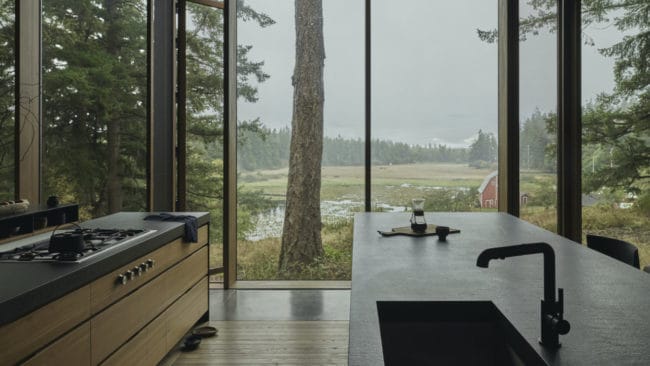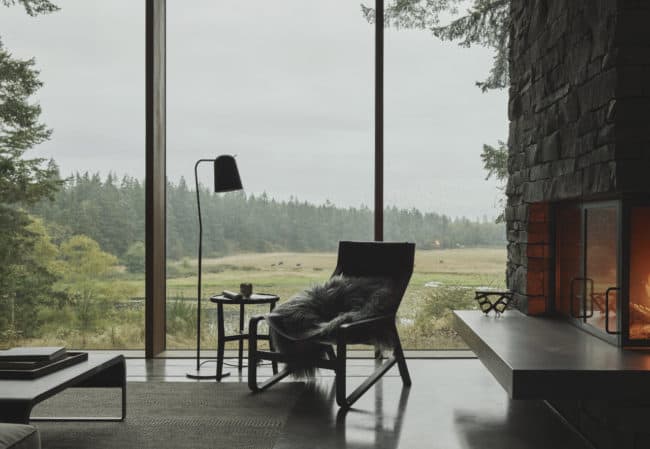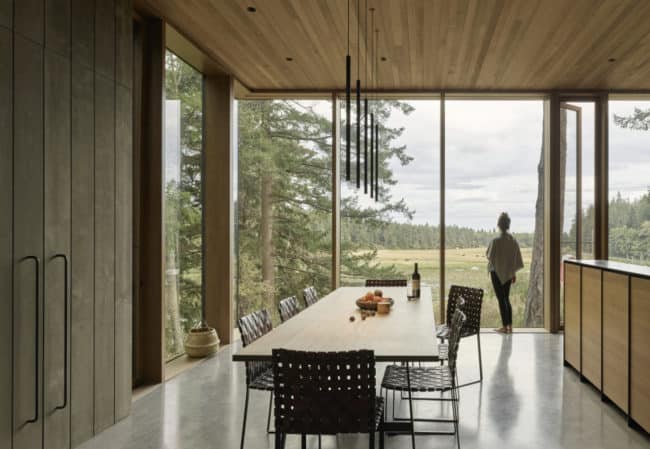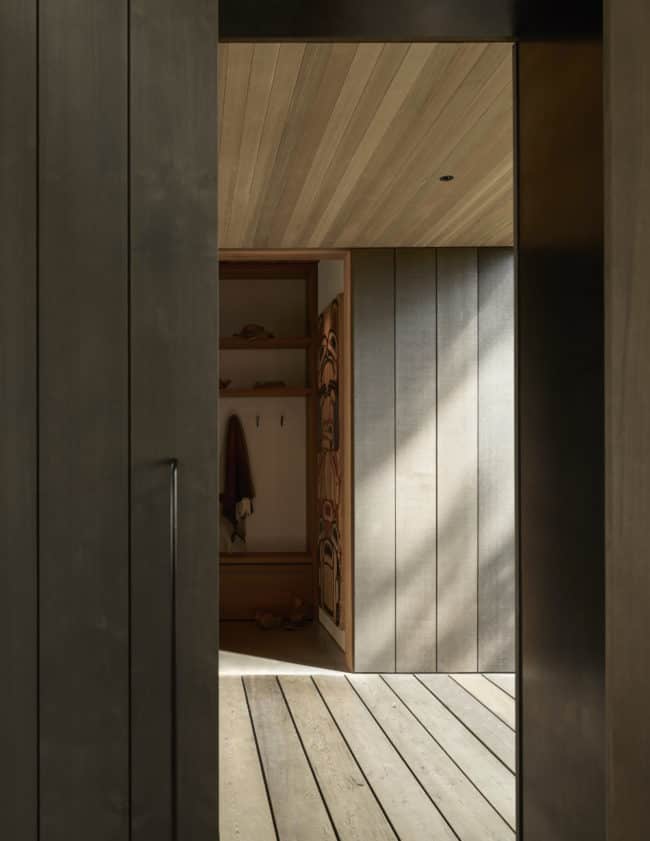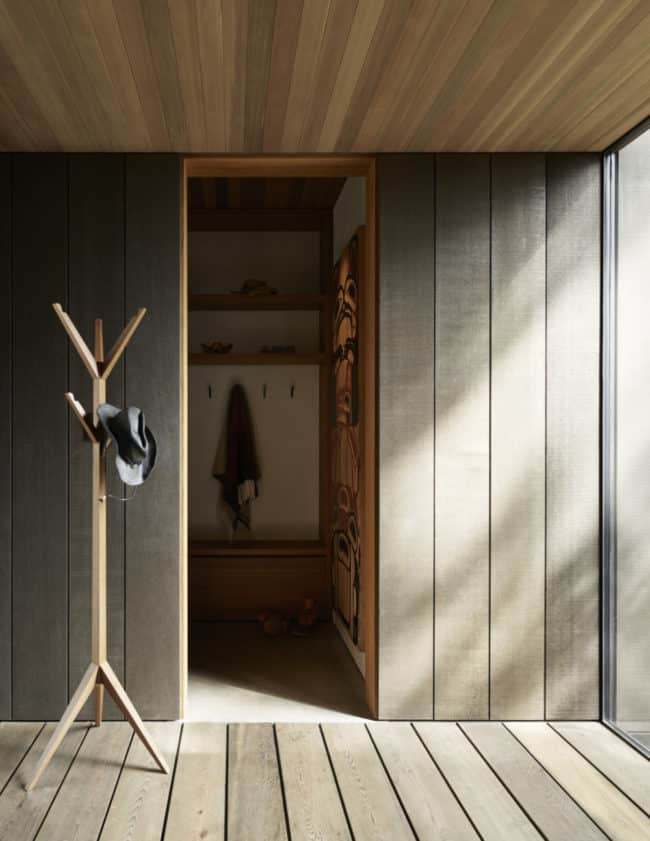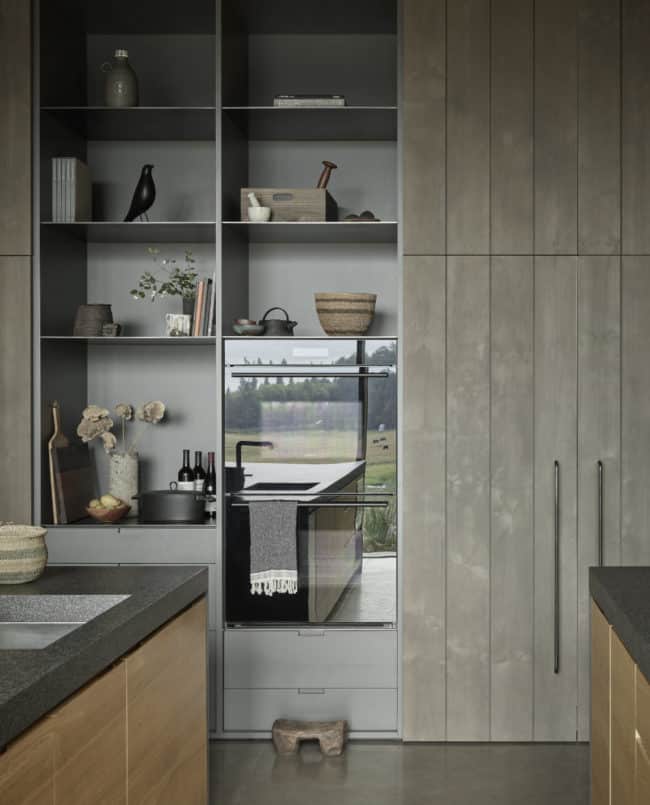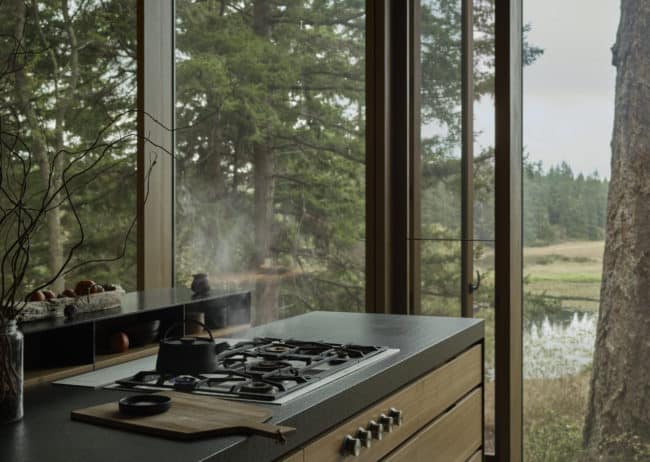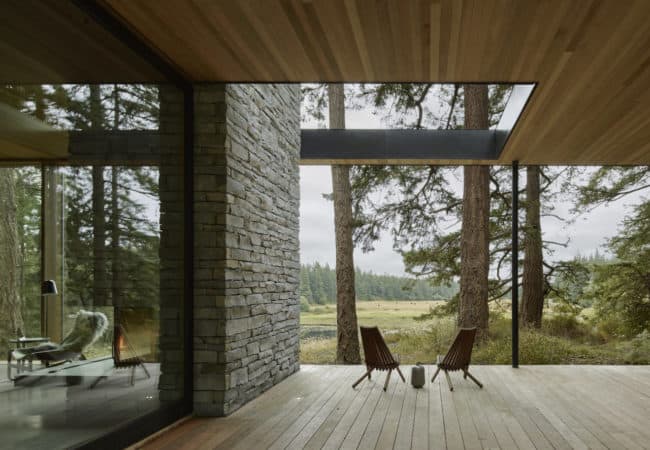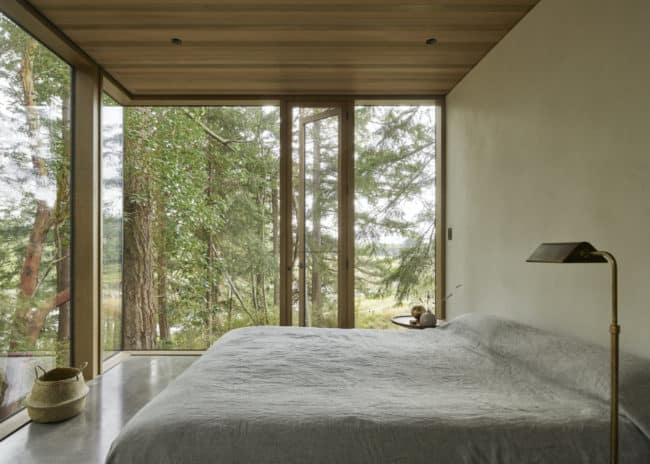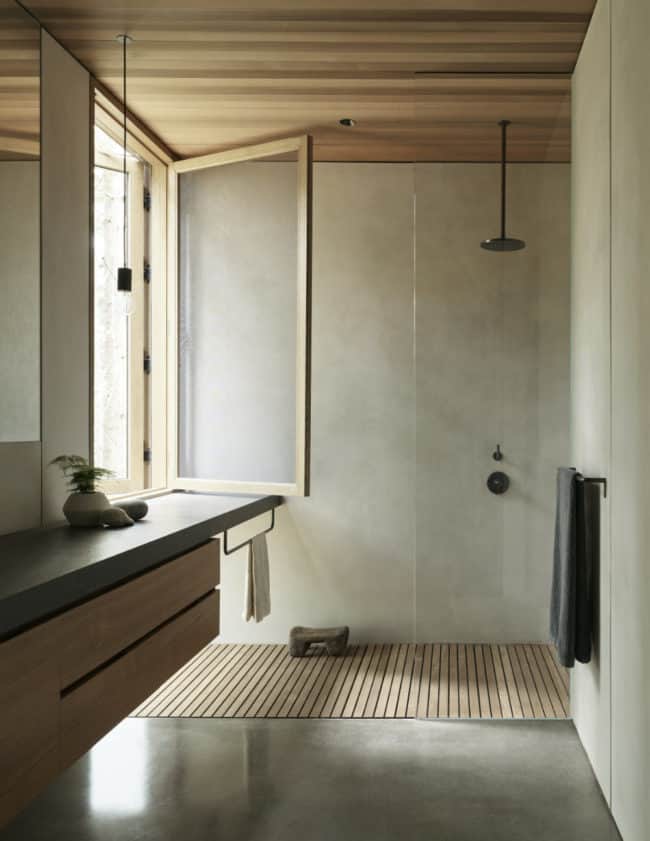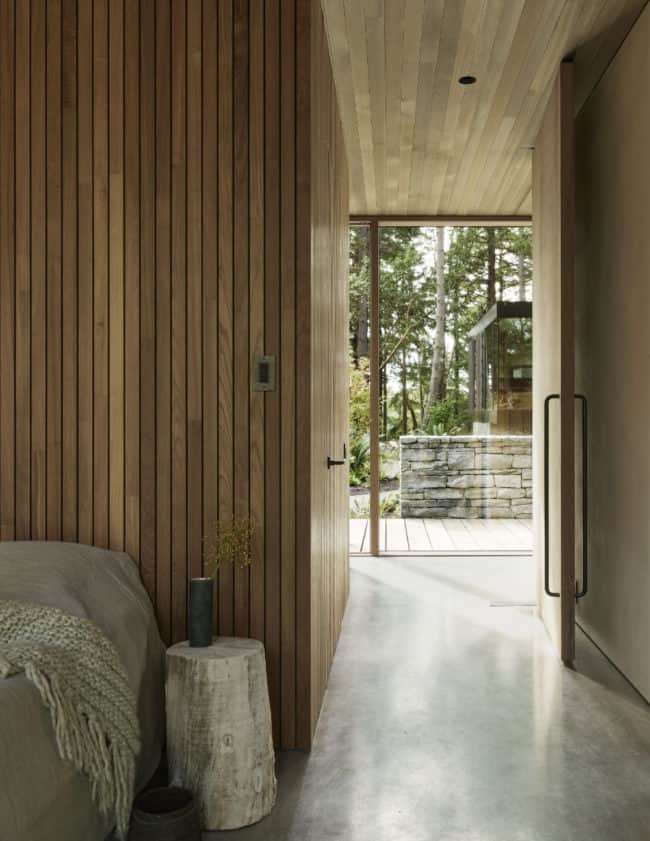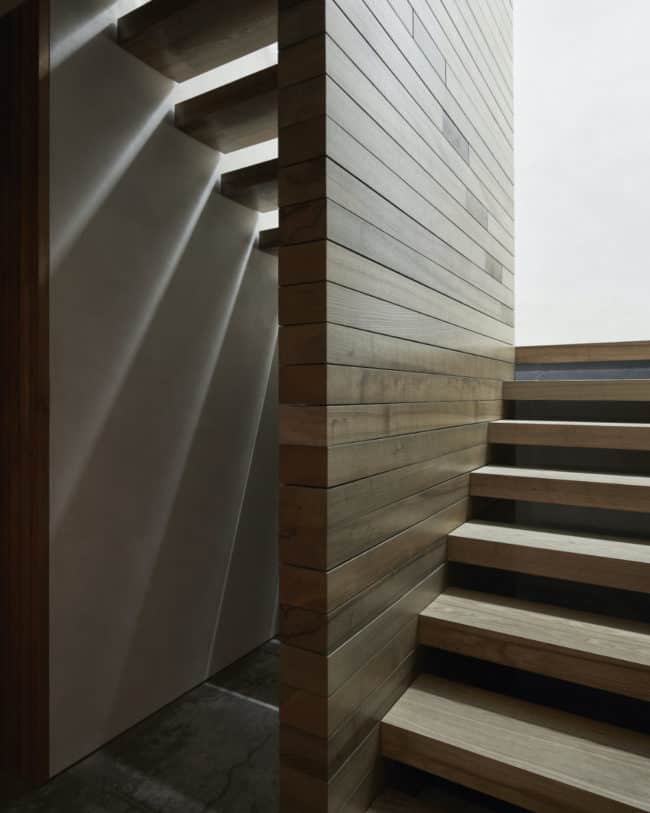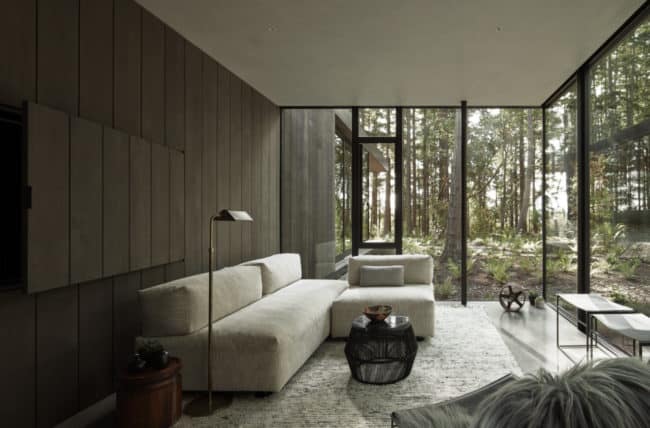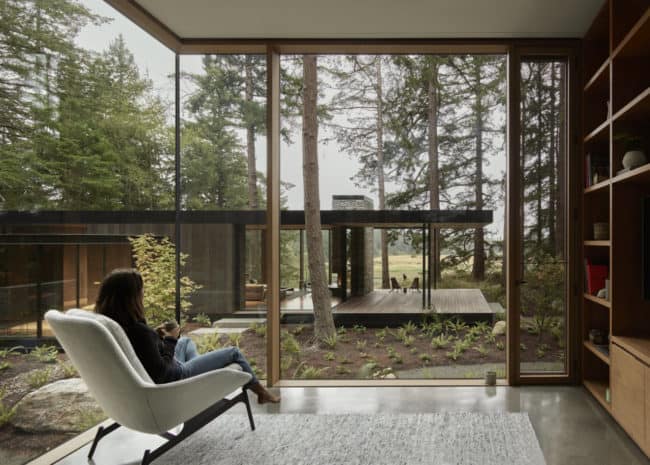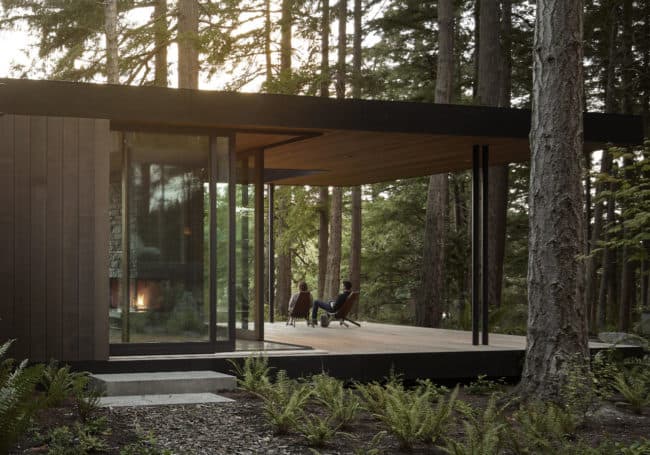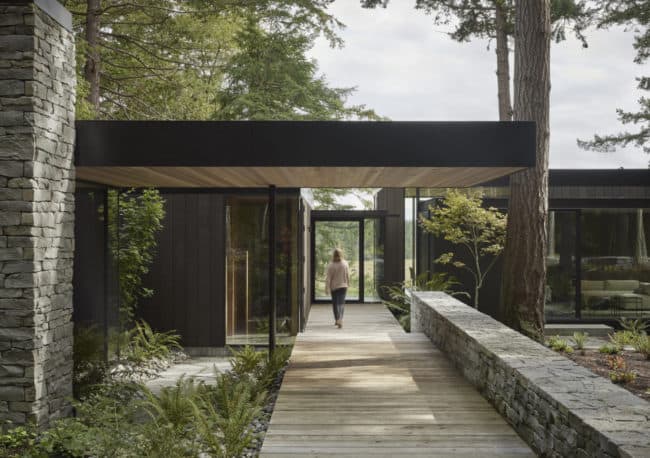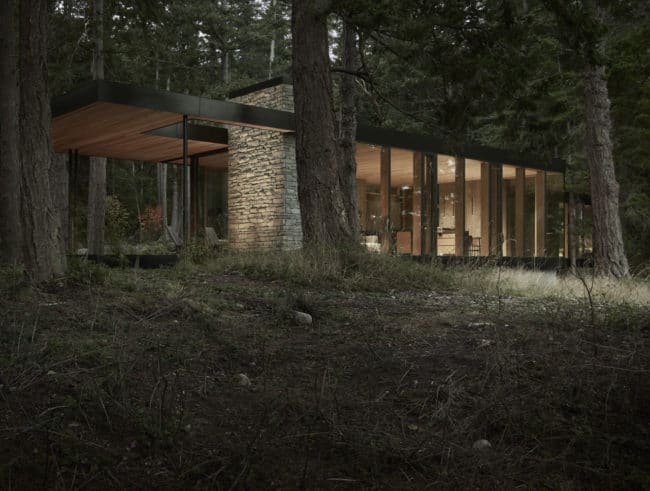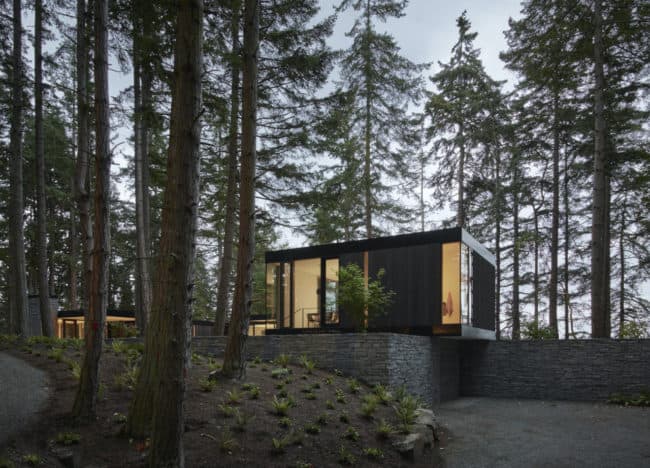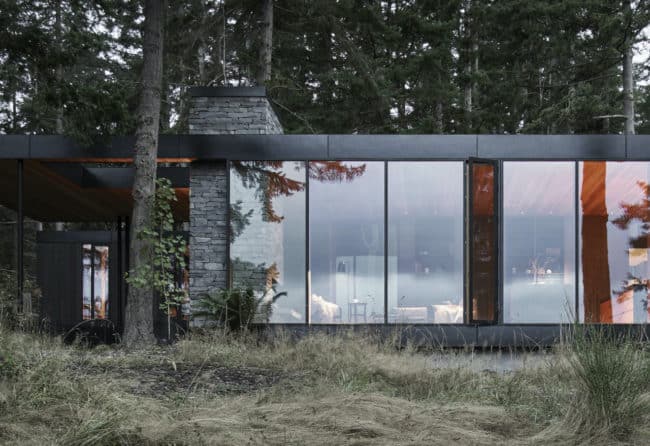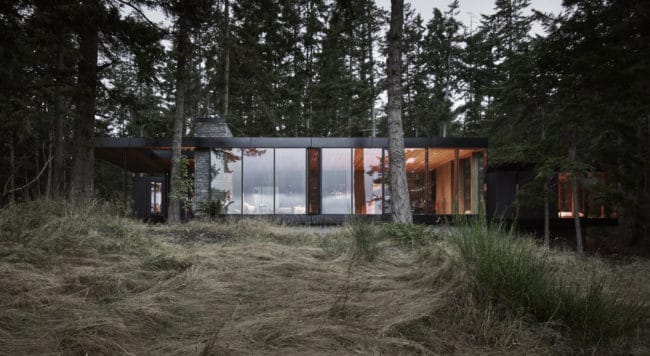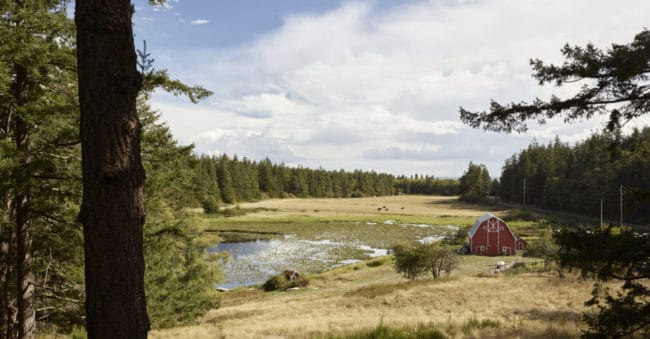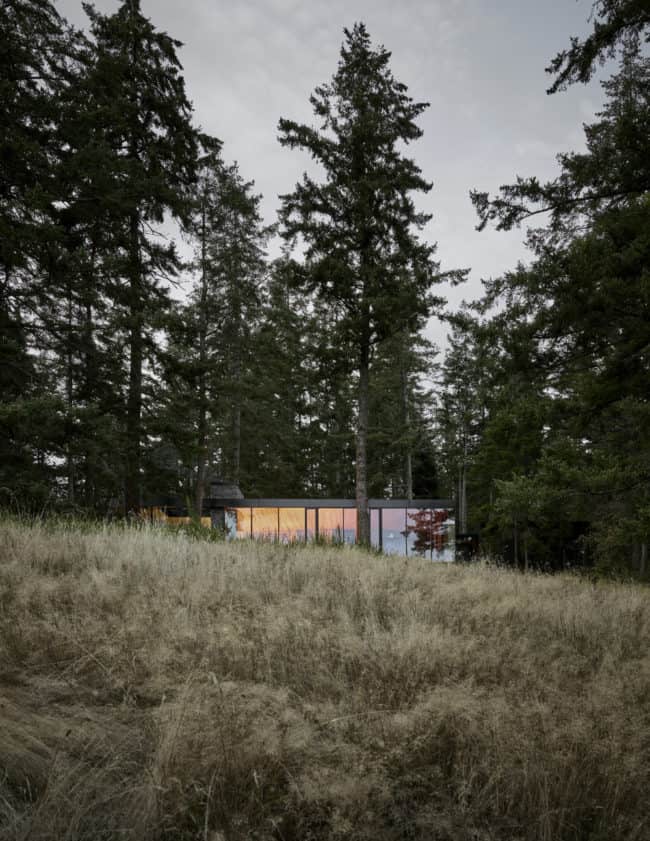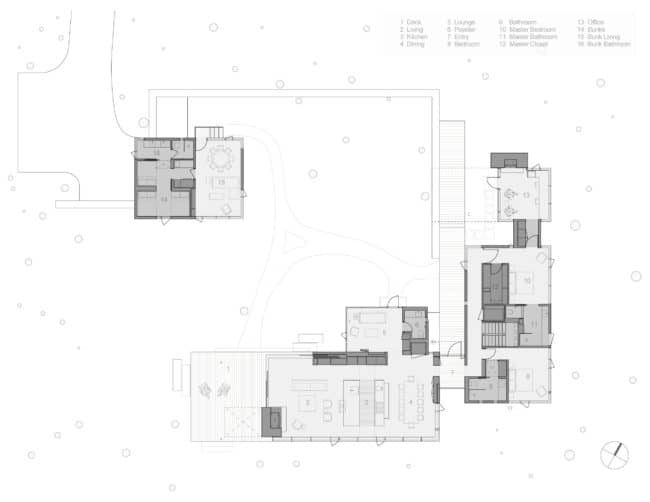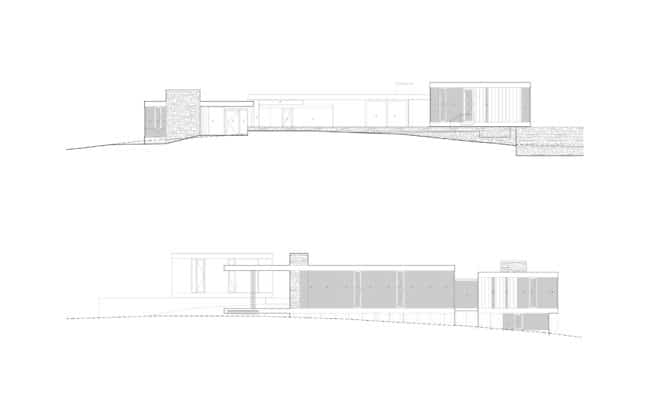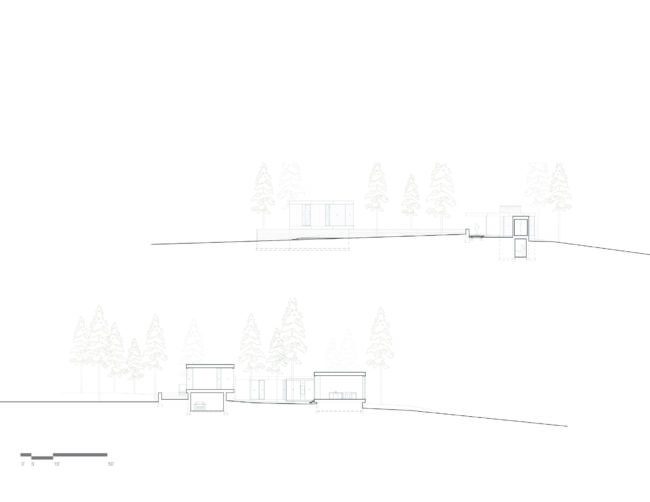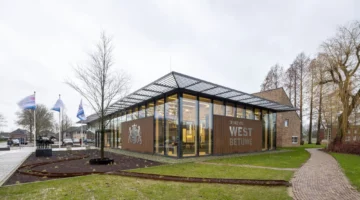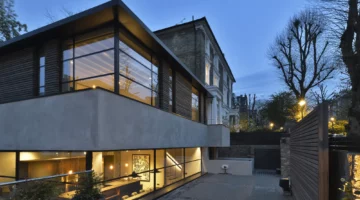Located on a rural site on Whidbey island, a local family sought a new home and retreat on their family farm. Out of respect for turn-of-the-century agricultural buildings on the property, the home tucks into the edge of a densely forested hillside, overlooking chicken sheds, a weathered red barn, cattle fields, and a fishing pond. The house appears intentionally modest and humble from the valley, deferential to the pastoral farmlands below.

The house was designed as both retreat and part-time residence for a growing family with strong local roots going back several generations on the island. Intended for summer BBQs, fishing retreats, and family gatherings, the house was designed to be flexible and durable, and reflect the layered history both of the site and the family itself. While designed to be comfortable for two, the house accommodates up to 20 people, with a four-bedroom main house and a bunkhouse for the many grandchildren and guests.
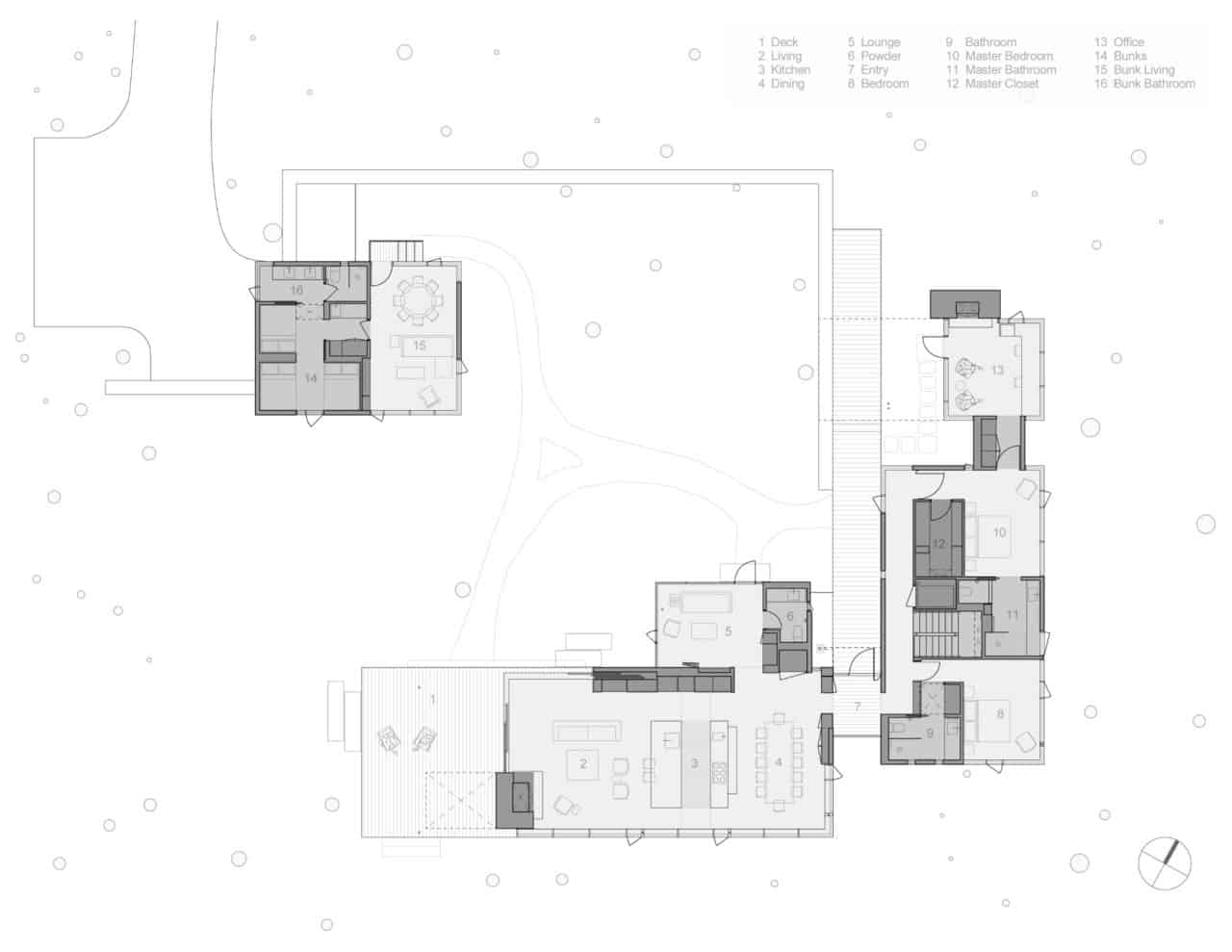
The program of the home is broken down into discrete, modestly sized volumes, carefully woven between an array of large Douglas fir trees and wrapped around a courtyard of native shrubs and ferns. A low wall of stacked local Basalt organizes the volumes and subtly defines the perimeter of the courtyard.

The courtyard becomes the visual and physical link between the different volumes, providing access and connection, but offering separation and retreat when desired. The rustic gravel approach to the house meanders through the dense and dark evergreens, opening to the house and layered views of the courtyard and trees.
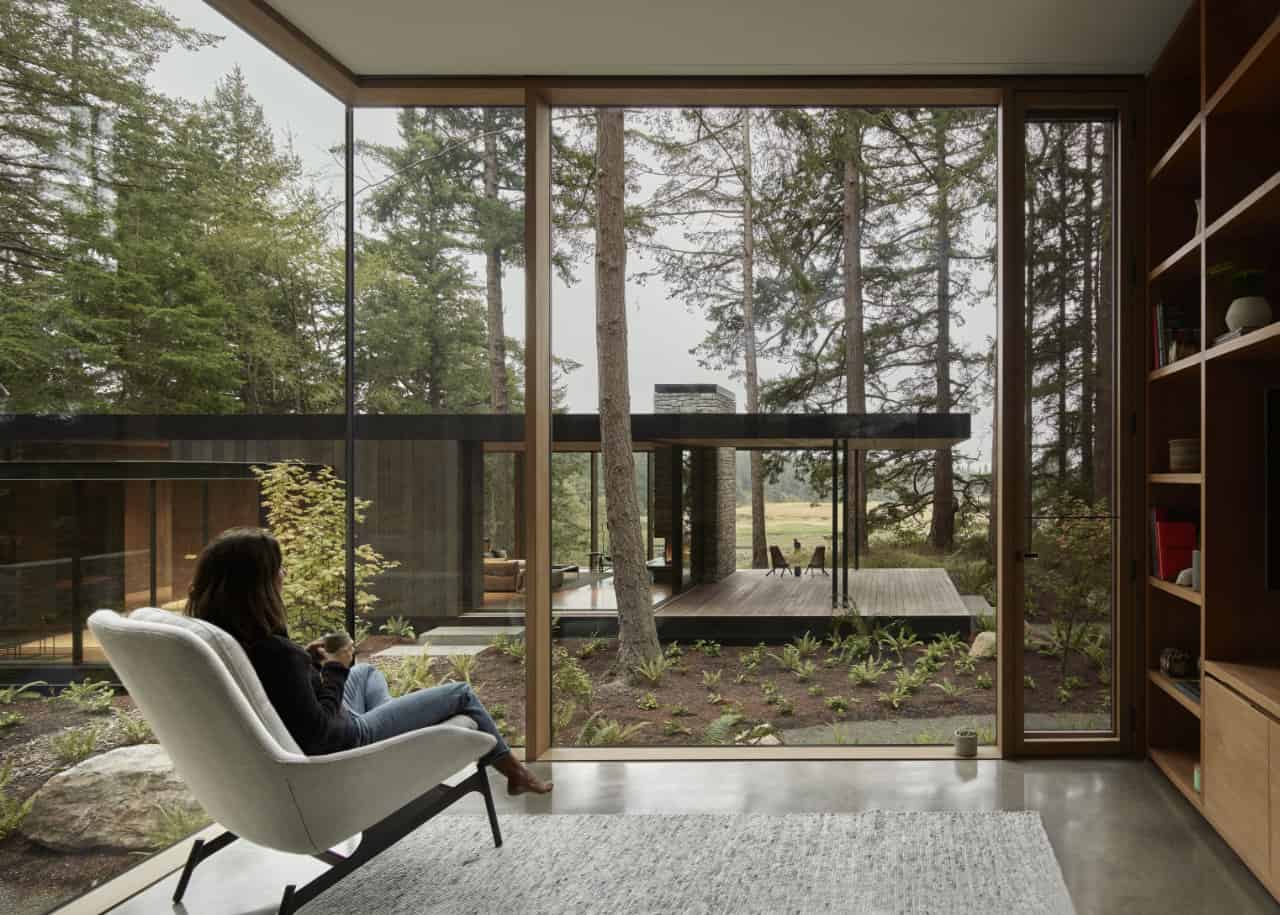
At the owner’s request, intense care and effort during design and construction placed the protection of the trees over construction expediency. What little tree fall was required, was carefully stored on the site, and is being used as lumber for the farm, cattle fencing, and as firewood for the fireplace and the new fire pit at the edge of the meadow.

Several of the interior doors and the wall art are carved solid cedar slabs crafted decades ago by the family patriarch, instilling a meaningful connection between the family’s past and present. The new solid plank cedar master bedroom door is designed as a future carving project for the owner, in between his days working the land, clearing brush, and raising organic cattle in the meadow below.
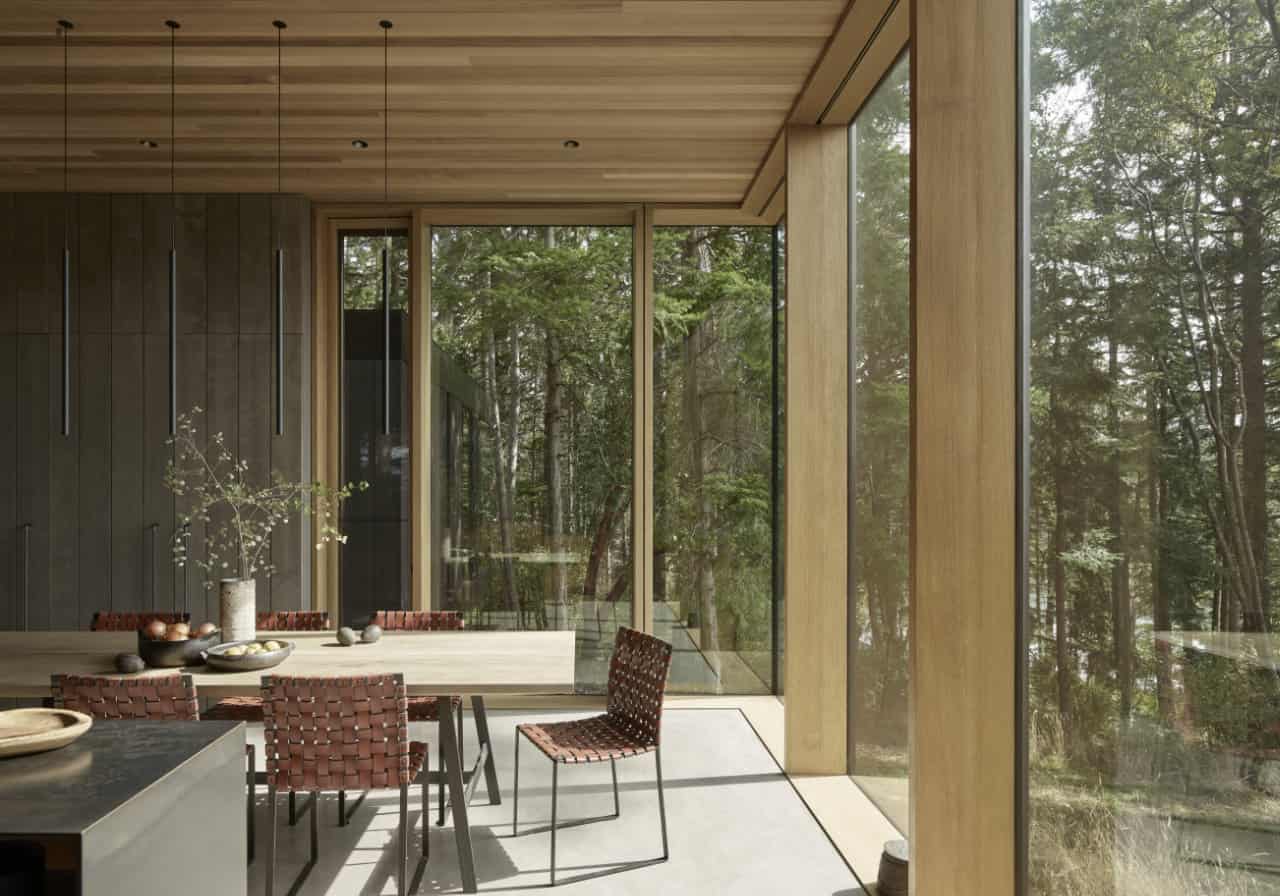
With a palette of naturally weathered woods, concrete, locally quarried stone walls, deep oak window jambs, plaster walls, and black steel accents, the house strives to be warm and rustic yet simple, clear, and open—a house that honors both the timelessness of the forest and agricultural heritage of the site.
